Choosing the wrong meat

It's common to view jerky meat similarly to steak: the more marbling, the better. However, Jess Pryles, the founder of Hardcore Carnivore, cautions against this mindset. "For steak, we are taught to seek out marbling, but for jerky, lean cuts are preferable. The fat is more prone to rancidity." This concern goes beyond shelf life; fat also complicates achieving the ideal jerky texture. It doesn't dry evenly, resulting in a finished product that can be greasy and have undesirable soft or rubbery areas.
So, what should you prioritize? The best choices are lean cuts such as top round, eye of round, or sirloin tip. These cuts are naturally low in fat, firmer, and easier to slice uniformly. Leaner cuts also absorb marinades more effectively, allowing the flavors to penetrate the meat rather than being trapped in the fat.
Ultimately, choosing the right cut of meat is crucial for a successful batch of jerky — a step you shouldn't overlook. While some experienced jerky makers enjoy experimenting with various cuts, if you're just starting out, it's wise to begin with a reliable lean beef cut to build your confidence before exploring other options.
Skipping the trimming
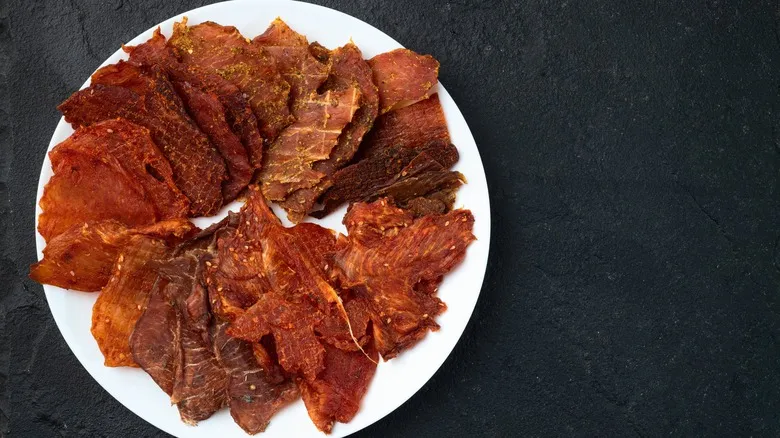
Even if you've chosen a lean cut of meat, neglecting the trimming process can be a regrettable error when preparing beef jerky. As Marye Audet shares, "I thought a bit of fat wouldn't be a problem. Unfortunately, it was! The jerky developed an off flavor after a week, and it was really disappointing." Fat affects beef jerky in several ways, and not trimming it properly can compromise all your efforts.
Firstly, trimming is not just about aesthetics; it's crucial for achieving even drying. Fat dehydrates at a different rate than lean meat, resulting in moisture pockets that can create inconsistent textures. These fatty sections can also hinder your jerky from attaining the chewy, dry quality that characterizes this beloved snack. Even worse, any remaining fat can go rancid during storage, resulting in unpleasant tastes or spoilage.
Spending a few extra minutes to trim your meat correctly is a simple yet vital step that distinguishes mediocre jerky from exceptional jerky. This meticulous approach ensures that every bite is both delicious and safe to consume. If you're concerned about wasting the trimmings, think about saving the scraps to render into tallow for cooking or other purposes.
Slicing the meat incorrectly
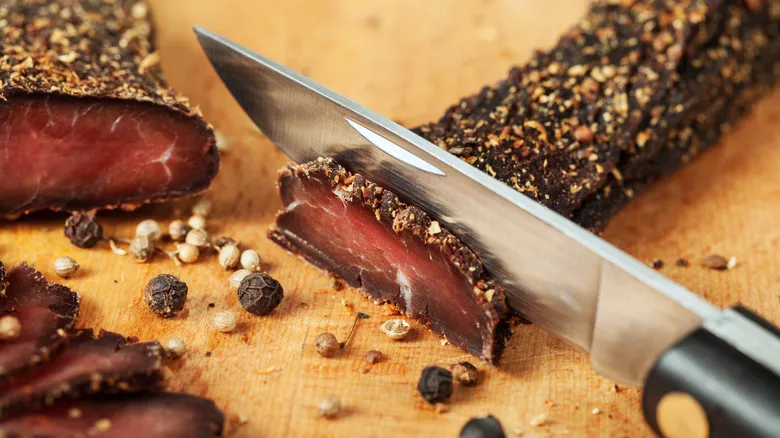
Proper slicing is one of the most frequently overlooked yet crucial steps in preparing beef jerky. Consistency is key to achieving the right texture and ensuring even drying. "If you're chopping your meat like it's a horror film, you'll end up with some chewy bits and others that are crunchy, resembling beef chips," explains Julian Plateado, chef and founder of Nordic Catch. This not only results in a disappointing eating experience but can also leave certain sections unsafe to eat.
The thickness of your slices significantly affects drying times. Slices that are too thick will require more time to dry and may not cure completely, while thinner slices can become overly dry and brittle. The objective is to create uniform pieces that dehydrate evenly, resulting in jerky that is both thoroughly cooked and tender.
Jess Pryles shares additional helpful tips regarding slicing. "If you cut your jerky against the grain, it will be more tender to bite into. However, I personally prefer jerky sliced with the grain because it lasts longer due to the extra chewing." This is because cutting with the grain produces longer muscle fibers, making the jerky chewier and more durable. Ultimately, the choice is yours, but maintaining consistency is what will determine the success of your jerky.
Not marinating them for long enough
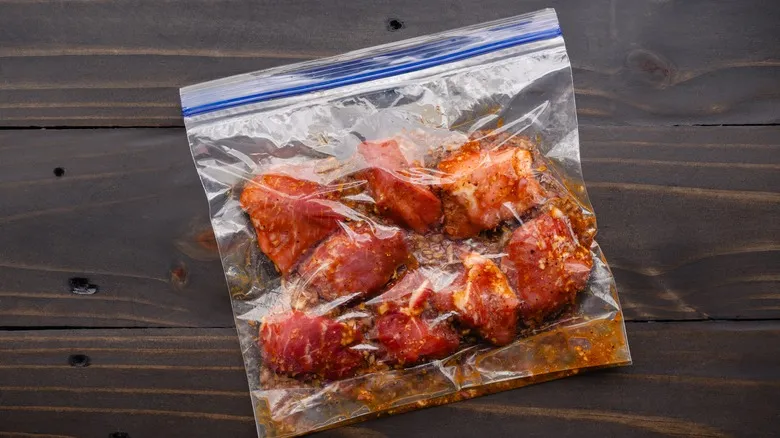
Marinating is where the flavor adventure of your jerky truly begins. This crucial step lays the groundwork for the final taste of your jerky, but hurrying through it can result in a dull, uninspiring snack. "Jerky needs time to absorb all that flavor. A quick dip just won't suffice. Think of it as a spa day for your meat," advises Julian Plateado, and he couldn't be more correct. The meat requires time to soak in the marinade, allowing the spices and seasonings to penetrate thoroughly. For optimal results, most jerky aficionados suggest marinating for 12 to 24 hours.
However, it's important to note that marinating for too long can be counterproductive. While it may seem that longer is better, that's not always true. "If you marinate too long, the meat can become overly salty or tough," cautions Jessica Randhawa, owner and head chef at The Forked Spoon. "I've discovered that 24 hours is the perfect balance for infusing flavor while preserving the meat's ideal texture."
The duration of marination also varies based on the thickness of your slices. Thinner cuts may require less time to absorb the flavor, while thicker pieces can benefit from a longer marination period. When marinating jerky, it's wise to use a non-reactive container, such as glass or food-safe plastic, to avoid any metallic flavors. Don't forget to keep the meat refrigerated during this process to prevent spoilage.
Using too much marinade

While marinating is essential for enhancing flavor, using an excessive amount of marinade can be counterproductive. When preparing jerky, achieving the right balance is vital. "Jerky has a concentrated flavor because as it dehydrates, the taste intensifies," explains Jess Pryles. This means that too much marinade can overpower the meat, resulting in jerky that is excessively salty or bitter. The objective is to evenly coat the meat without saturating it, allowing the flavors to infuse without becoming overwhelming.
Another valuable tip from Pryles is to cut your meat prior to marination, as this speeds up the process. By increasing the surface area, the marinade can penetrate more thoroughly and uniformly, leading to improved flavor absorption in a shorter amount of time.
Additionally, it's important to dry off the marinade before dehydrating. "Excess marinade on the surface can result in sticky jerky," cautions Julian Plateado. Too much liquid can create a gooey texture and, as Jess Pryles notes, can slow down the drying process, causing uneven dehydration. For optimal results, be sure to gently pat the meat with a paper towel before beginning the drying process.
Overseasoning or underseasoning

When it comes to seasoning your beef jerky, achieving the right balance is crucial. "Seasoning is a nuanced skill in jerky preparation," explains Jessica Randhawa. "Too much seasoning can mask the meat's natural flavors, while too little will lead to a tasteless result." For many, it may take several attempts to discover the ideal ratio. The secret lies in recognizing that spices and herbs should enhance, not dominate, the inherent taste of the meat. A gentle touch and gradual modifications are the best approach to avoid over-seasoning or under-seasoning.
If you're looking for a starting point, Jess Pryles provides some valuable seasoning tips: "I enjoy using crushed coriander seed, similar to what is done in South African biltong. It pairs wonderfully with beef." The slightly citrusy and warm notes of coriander add depth without overshadowing the meat. In fact, exploring spices from various culinary backgrounds can lead you to new flavor combinations that elevate the jerky without overwhelming it. Consider incorporating other seasonings like smoked paprika, black pepper, or a hint of brown sugar for a touch of sweetness. Each of these can enhance the natural beef flavor, giving your jerky a distinctive flair.
Regardless of your choices, it's best to begin with a small amount of seasoning, taste as you go, and keep in mind that with jerky, it's always simpler to add more seasoning later than to correct an overly seasoned batch.
Cooking the meat instead of drying it

A crucial step in preparing beef jerky is the drying process, and not just any technique will suffice. While it may seem easier to use an oven, a dehydrator is much more likely to yield the desired results. High temperatures, such as those found in an oven, can cause the outer layer to dry too quickly, leaving the interior moist and undercooked, as noted by Marye Audet. "I rely on my dehydrator for this because it maintains a consistent, low temperature," she explains. Dehydrators are specifically designed for this task, providing even drying for that ideal chewy texture without overcooking the exterior.
Julian Plateado also highlights the dangers of excessive heat, noting that jerky prepared at high temperatures may end up tasting more like "a beef roast" rather than the tasty snack you want. If you must use an oven, he recommends the "low and slow" approach for optimal results. Jessica Randhawa concurs that managing temperature is essential. "Drying or cooking at excessively high temperatures can effectively cook the meat instead of properly dehydrating it." For those making beef jerky in the oven, she specifically advises keeping the temperature around 160°F to achieve the perfect balance of dryness and chewiness.
Not drying the meat for long enough

Failing to dry your beef jerky adequately can often result in undesirable outcomes. Although it might be tempting to remove it from the dehydrator as soon as it appears finished, it's crucial to test the jerky for the right texture towards the end of the drying period. Jess Pryles notes that "timing the perfect doneness can be challenging, ensuring the jerky is safely cured without becoming too dry or crumbly." The jerky should feel firm yet slightly flexible, with no visible moisture. If it snaps or breaks when bent, it has been over-dried; conversely, if it remains soft or sticky, it requires additional drying time. The secret to achieving the right texture lies in both temperature and duration.
For optimal control, Pryles suggests using a dehydrator equipped with a precise temperature gauge instead of relying on "high" and "low" settings. Knowing the exact temperature allows you to better estimate the drying time needed for the jerky and make adjustments based on previous experiences. This approach significantly reduces the chances of over-drying or under-drying your jerky. Ultimately, understanding these factors will enable you to perfect the process over time.
Rushing to eat it before it's had ample time to dry
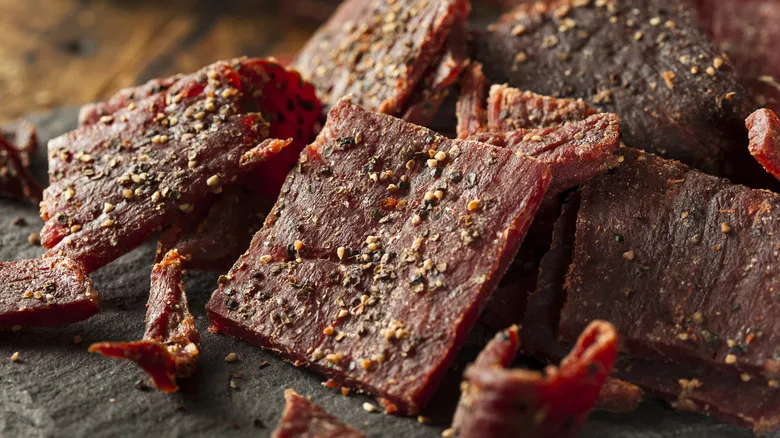
The most challenging aspect of making jerky may not be the slicing, marinating, or drying process — it’s the anticipation of enjoying your delicious creation. However, hurrying through the final steps can compromise all your hard work. Julian Plateado understands this dilemma: "After drying, allow it to rest so the flavors can meld. Yes, it’s tough, but jerky rewards those who are patient." This resting phase is crucial; it enables the flavors to fully develop and the texture to stabilize, resulting in that signature chew. Think of it as allowing the jerky to "finish cooking" off the heat. Just like letting a steak rest before slicing, giving jerky this final break ensures a product that not only tastes fantastic but also has the ideal texture.
So, how long should you let your jerky rest before indulging? Some enthusiasts even wait up to a day before diving in, though 30 minutes to an hour is likely sufficient.
Crowding the dehydrator

Overcrowding beef jerky in a dehydrator can create chaos during the drying process, leading to uneven textures and inconsistent outcomes. Expert Julian Plateado has referred to this frustrating issue as "jerky roulette," where you find yourself taking chances on pieces that may turn out "too dry or too soft."
The main issue is inadequate airflow. When meat strips are packed too closely together, they hinder the dehydrator's air circulation. This causes moisture to become trapped in certain areas while other sections become overly dry. The result is often a batch that is either as tough as leather or alarmingly under-dried—neither of which is desirable for any jerky maker. Commercial producers sidestep this problem by utilizing industrial dehydrators equipped with powerful fans and rotating racks, but home jerky makers must be more strategic.
The key to success is proper spacing. Ideally, you should leave about half an inch between each piece to allow warm air to circulate freely around the strips, effectively wicking away moisture at a consistent rate. While it may seem more efficient to dry large batches at once, the reality is that patience yields better results. Running several smaller batches instead of cramming everything into one go will lead to far superior outcomes.
Storing your jerky improperly
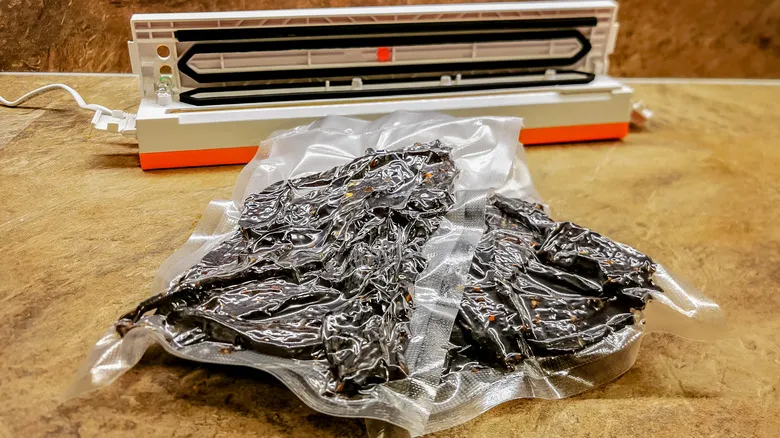
Even the best-made jerky can spoil rapidly without the right storage methods. "Jerky needs to be kept airtight. Vacuum sealing is the best option unless you want to end up with moldy jerky (spoiler alert: nobody wants that)," advises Julian Plateado. While store-bought jerky often remains shelf-stable due to preservatives, homemade jerky operates under different guidelines, relying solely on salt, smoke, and dehydration for preservation. "I learned the hard way that jerky doesn't last indefinitely," confesses Marye Audet, who once discovered a forgotten batch covered in mold at the back of her pantry. Now, her rule of thumb is that if she won't consume her jerky within a week, she puts it in the fridge.
Jess Pryles recommends adding silica gel packets to her jerky containers. These small packets, similar to those found in shoeboxes, effectively absorb moisture that could spoil your jerky. She adds, "If you plan to store it for an extended period, I suggest vacuum sealing — keeping oxygen out is crucial."
Implementing good storage practices safeguards both your jerky and your investment of time. A vacuum sealer pays for itself by preventing spoilage, and portioning your jerky into smaller amounts means you're not exposing the entire batch to air every time you crave a snack.
Recommended

Gordon Ramsay Thinks Every Kitchen Needs 2 Types Of Blenders
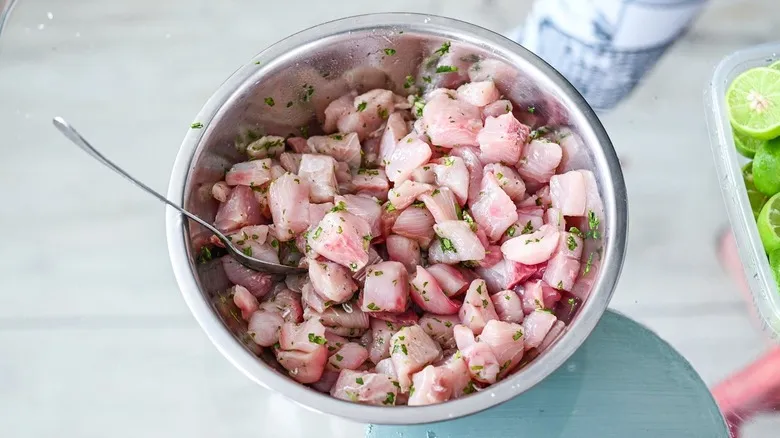
The Type Of Fish You Should Avoid Buying When Making Ceviche
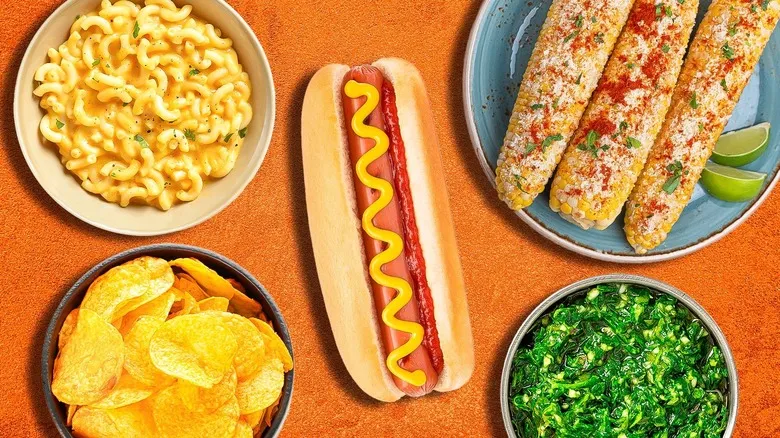
15 Unconventional Toppings That Take Hot Dogs To The Next Level
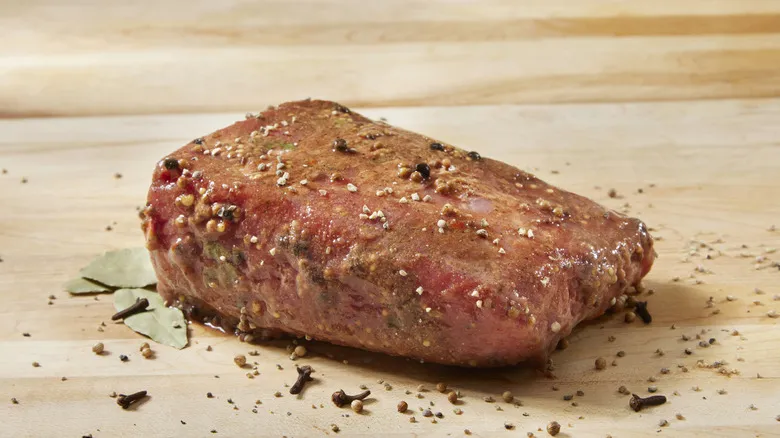
Should You Be Rinsing Corned Beef?
Next up

